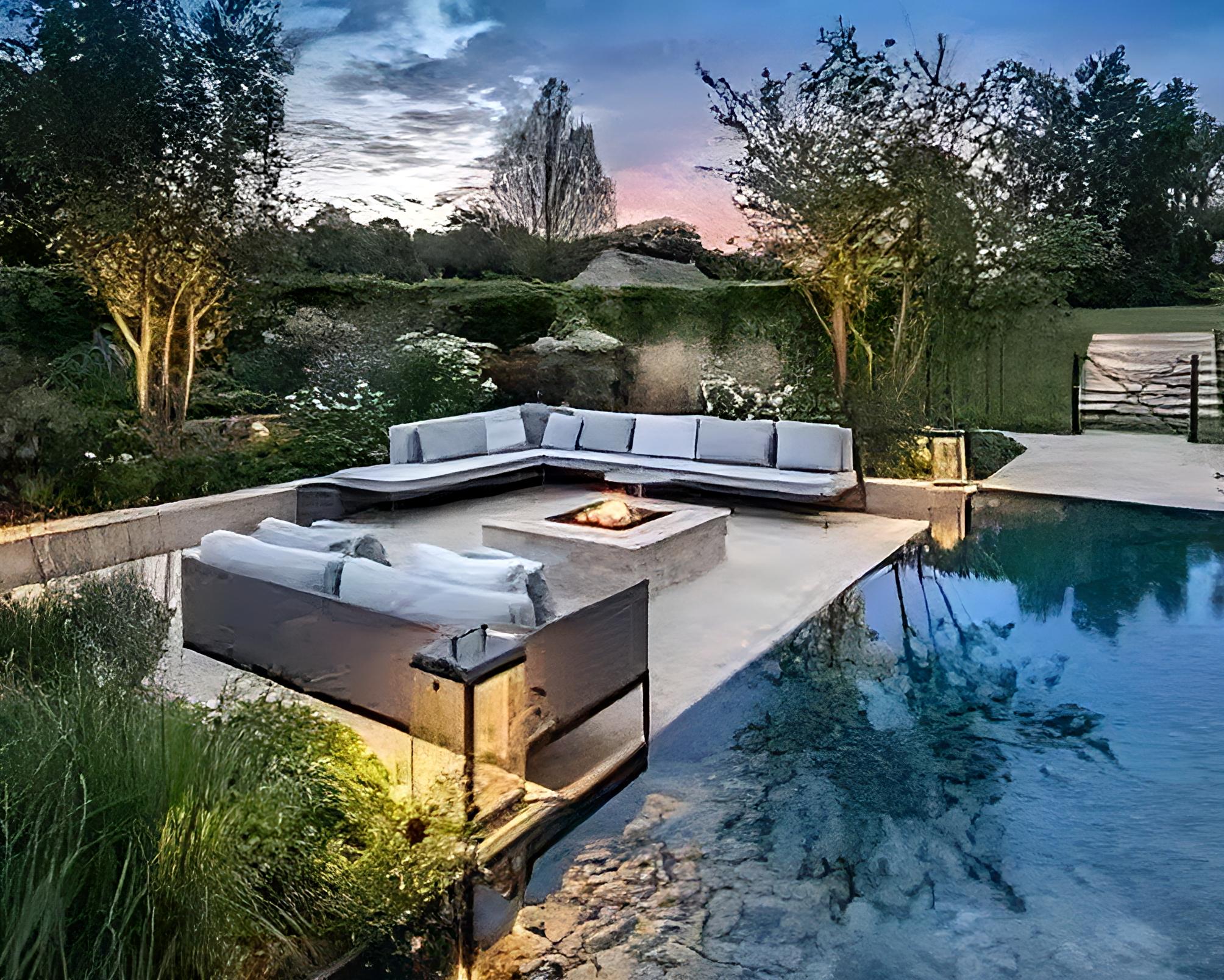Light Up Your Evenings with a Thoughtful Garden Lighting Plan

A well-designed garden lighting plan can transform your outdoor space into a cosy retreat — even after sunset. The key is to balance energy efficiency, safety, and ambiance, while also showing consideration for your neighbours and local wildlife.

Choose Weatherproof Outdoor Lights
Outdoor lights must be able to withstand moisture, dust, and dirt, so selecting fixtures with the correct IP protection class is essential.
- IP44: Ideal for wall lights near entrances or back doors — protects against small particles and splashing water.
- IP65 or IP67: Perfect for ground and garden spotlights that require stronger resistance to dust and water.
- IP68: Required for lights used underwater in ponds or pools.

Choosing the right IP rating ensures longevity and safety for your lighting system, no matter the weather.
Why LED Technology Is the Best Choice for Gardens
Modern outdoor lighting relies heavily on LED technology, which offers:
✅ Long lifespan (tens of thousands of hours)
✅ Low energy consumption
✅ Bright and adjustable light
Opt for fixtures with replaceable LEDs to avoid throwing away entire units if one diode fails.
When planning your setup, remember:
- 400–600 lumens is great for terraces or walls.
- 1000–1500 lumens works for driveways (best with motion sensors).
You can use a 12V low-voltage system for DIY installation, but for 230V systems, hire a professional electrician to ensure safe and compliant wiring.

Smart Installation and Lighting Systems
If you want a professional finish, consider a cohesive lighting system. Start from existing energy columns and combine ground spotlights, light strips, and pedestal lights for layered illumination.
You can control or dim your lights via switches, remote controls, or smart home apps, and even experiment with colour-changing RGB features to create a magical evening atmosphere.
Pro Tip: Conceal your low-voltage cables with mulch, gravel, or ground-cover plants, and keep track of their layout in your garden plan. Solar lights come complete without cables. You can place them wherever you want: there are models for hanging, placing, or as shown here, for sticking into the ground.

Boost Safety with Functional Lighting
Proper garden lighting enhances not just aesthetics but also safety. Illuminate driveways, paths, and steps to avoid tripping hazards.
- Use cold white light for visibility.
- Integrate motion sensors for energy efficiency.
- Install bollard lights or downward-facing lamps along garden paths for glare-free guidance.
For a stylish touch, try light strips along gravel paths — they create the illusion of glowing rivers winding through your garden at night.

Create a Warm and Inviting Ambiance
Outdoor lighting should feel natural and soothing, not overpowering. Highlight only key areas, such as trees, shrubs, and seating zones, to achieve a balance of light and shadow.
During winter, subtle outdoor illumination also enhances your view from indoors — turning a dark void into a peaceful nightscape.
Pro Tip: Light up the back of your garden as well. It adds depth and a sense of space when viewed from your windows.

Illuminating Trees, Shrubs, and Flowerbeds
Showcase your plants by lighting them from below with ground spotlights or ground-mounted lamps.
- Wide trees → 40° beam angle
- Slim trees → 20° beam angle
Highlight stone walls or fences with indirect lighting to emphasize their texture. For flowerbeds, choose adjustable ground spotlights to shift focus with the seasons — from tulips in spring to ornamental grasses in autumn.
Decorative light spheres or illuminated ornaments add charm, but remember: less is more for a refined look.

Lighting for Water Features
Ponds, pools, and fountains can look breathtaking at night. Use IP68-rated underwater spotlights or ground-mounted lights to highlight rippling water or waterfalls.
Keep in mind:
- Turn them on only briefly to protect nocturnal insects and aquatic life.
- Indirect light strips around edges create a serene, shimmering effect.

Portable and Solar-Powered Light Options
For flexibility, use portable lamps or rechargeable lighting. These are perfect for barbecues, outdoor dining, or late-night reading in your garden lounge.
Rechargeable battery-powered or solar garden lights are eco-friendly and easy to move. If your solar light has a separate solar panel, make sure it faces south and stays clean for optimal charging.

Go Insect-Friendly and Eco-Conscious
To protect pollinators and other nocturnal creatures, use warm white lights (1500–2700 K) — these are less attractive to insects.
Modern smart lights now feature “insect-friendly” modes that stay dim until motion is detected. Avoid leaving lights on all night to prevent light pollution, which disrupts wildlife and even human sleep cycles.

Be Considerate of Your Neighbours
Finally, make sure your lighting design doesn’t shine directly into neighbouring windows or gardens. Aim for soft, downward-directed light and avoid bright spotlights near property lines.
Good lighting should bring you joy — not conflict. Thoughtful placement ensures a peaceful, glowing garden that everyone can appreciate.

🌿 Final Thoughts
With the right combination of LED technology, solar power, and creative placement, your garden can be both enchanting and environmentally responsible.
By prioritising safety, sustainability, and serenity, you’ll create a space that glows beautifully through every season.


- News & Current Affairs
- Business & Economy
- Finance & Money
- Education & Learning
- Technology & Innovation
- Science & Environment
- Health & Wellness
- Food & Drink
- Home, Garden & Lifestyle
- Travel & Tourism
- Fashion & Beauty
- Art & Culture
- Entertainment & Media
- Sports & Recreation
- Personal Growth & Lifestyle
- Careers & Work
- Tutorials & How-To Guides
- Real Estate & Property
- Automotive
- Family & Relationships
- Environment & Sustainability
- Law & Legal Matters
- Gaming & Esports
- Religion & Spirituality
- Community & Local Voices
- Miscellaneous


